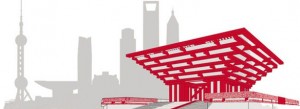Shanghai, the most cosmopolitan, vibrant and economically prosperous city in the world, is originally a fishing village on a mudflat which almost literally overnight became a great metropolis.
Inevitable meeting place of world travelers, the habitat of people of forty-eight different nationalities, of the Orient yet Occidental, the city of glamorous night life and throbbing with activity, Shanghai offers the full composite allurement of the Far East.
Not a wilderness of temples and chop-sticks, of jade and pajamas, Shanghai in reality is an immense and modern city of well-paved streets, skyscrapers, luxurious hotels and clubs, trams, buses and motors, and much electricity.
Less than a century ago Shanghai was little more than an anchorage for junks, with a few villages scattered along the low, muddy banks of the river. What it will be a hundred years from now is a test for the imagination. Principal gateway to China, serving a hinterland population of more than 200,000,000, many close observers believe it will become the largest city in the world.
Although neighboring cities like Nanjing, Suzhou, and Hangzhou figure spaciously in the flourished in ancient China, Shanghai is very rarely mentioned. It was the domain of the Kingdom of Wu of the Spring and Autumn Period. Shanghai was so called not until in the Song Dynasty.
But when the British opened their first concession here in 1842, after the first Opium War, it was little more than a small town supported by fishing and weaving. Change was rapid. The French turned up in 1847 and it wasn’t long before an International Settlement was established. By the time the Japanese rocked up in 1895 the city was being parcelled up into settlements, all autonomous and immune from Chinese law. Enter China’s first fully fledged Special Economic Zone.
The world’s greatest houses of finance and commerce descended on Shanghai in the 1930s. The place had the tallest buildings in Asia, and more motor vehicles on its streets than the rest of China put together. Shanghai became a byword for exploitation and vice, in countless opium dens and gambling joints, in myriad brothels. Guarding it all were the American, French and Italian marines, British Tommies and Japanese bluejackets.
The foreigners no longer had control and by 1949, Shanghai was transformed by the Communist Chinese government. As the foreigners left, the businesses that were left behind were one by one taken over by the government. After losing ground during the Cultural Revolution from 1966 to 1976, Deng Xiaopeng’s open door policy allowed for the advancement back to being an international force in business and finance.
The city continues to grow with new underground stations highways crisscrossing the city, the most modern stock exchange in the world and two new cultural institutions. However despite the growth and international investment Shanghai is still a city of contradictions as poverty is still prevalent.
